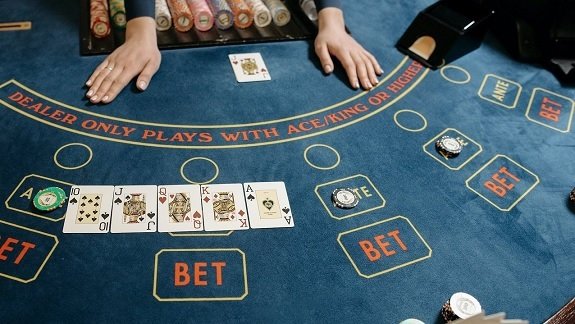Hand Range Modeling and Behavioral Patterns
Hand range modeling is a fundamental technique in advanced poker software, enabling players to predict possible hands an opponent might hold based on past actions and betting patterns. By analyzing the frequency and size of bets, players can infer an opponent’s hand strength. For example, smaller bets may indicate weakness, while larger bets could suggest strength or bluffing. Additionally, bet timing is crucial—quick bets might signal confidence, while hesitation could imply uncertainty or deception. Recognizing these patterns allows players to make informed decisions about opponents’ likely hands.
Machine learning (ML) and artificial intelligence (AI) have significantly advanced behavioral analytics in poker. Tools like PokerSnowie and MonkerSolver leverage neural networks and game theory optimal (GTO) strategies to help players refine their gameplay. These applications analyze vast historical data to predict opponent behavior, providing insights beyond simple statistical analysis. Real-time data integration, such as Heads-Up Displays (HUDs), offers players immediate feedback on opponents’ tendencies, enabling dynamic strategy adjustments during play.
Psychological Aspects in Poker Analytics
Psychological factors also play a key role in poker analytics. Concepts like tilt—where players make irrational decisions due to emotional distress—can provide a strategic edge for observant opponents. New software tools are being developed to help players manage their psychological state, thus maintaining optimal performance under pressure. Additionally, identifying bluffing tendencies and interpreting digital cues, such as bet sizing and timing, further enhance a player’s ability to accurately read opponents.
Physiological and Psychosocial Factors
Analyzing both physical and psychological cues is central to behavioral analytics in online poker. The use of machine learning and user behavior analytics can help identify patterns and anomalies in player behavior. Traditionally, poker tells have been studied using extensive video footage, where players’ nonverbal behaviors are recorded, tagged, and analyzed. However, the variability of poker situations creates challenges in uniform data collection and analysis, as different scenarios (e.g., river bets) require unique strategies.
Advances in behavioral analytics tools now make it possible to detect subtle poker tells in virtual environments. These tools analyze a player’s physiological responses, facial expressions, and interaction patterns, sometimes using webcams or chat behaviors. This level of insight enables players to gain an edge when you play poker online. Beyond poker, these data-driven insights are useful in other online gaming environments and virtual spaces. Behavioral analytics is expanding into areas like competitive gaming strategies and customer interaction enhancements in virtual reality (VR).
Research and Ethical Considerations
One of the largest behavioral studies on poker players involved recording and analyzing thousands of hours of video to understand nonverbal behaviors at the table. Biofeedback devices and RFID tables helped gather data, which was then processed through machine learning models for analysis. While the variability of situations remains a challenge, the role of machine learning in automating nonverbal behavior coding has greatly improved both qualitative and quantitative behavioral analysis.
However, the use of advanced tracking software in online poker raises ethical concerns. Some argue that these tools offer an unfair advantage, while others consider them essential in the competitive landscape of professional poker. In addition to ethical issues surrounding fairness, problem gambling behaviors in online poker environments complicate the debate further. Tracking software can potentially help identify and mitigate problem gambling by monitoring risky behavior patterns in real time.
Wider Applications of Behavioral Analytics
Behavioral analytics, grounded in both physical and psychological cue analysis, is now a powerful tool for predicting player actions in poker. By utilizing machine learning and user behavior analytics, these tools can detect patterns and anomalies in behavior, providing valuable insights. Not only can subtle tells be detected in virtual environments, but AI-powered tools can also analyze physiological responses, facial expressions, and player interactions. This advanced technology offers a significant strategic advantage to players, empowering them to enhance their decision-making and performance.
Moreover, the broader application of these insights stretches far beyond poker. Industries such as competitive gaming, online customer interaction, and even corporate training programs are adopting these data-driven behavioral tools to refine strategies, improve performance, and enhance user engagement. The potential for real-time feedback and predictive modeling in a variety of virtual and online spaces makes this technology an exciting frontier for professionals across multiple industries.
Conclusion
The integration of advanced behavioral analytics in virtual poker environments is revolutionizing how players detect tells, refine strategies, and interact with opponents. Through the use of machine learning, AI, and psychological analysis, players can now make better-informed decisions and improve their overall gameplay. However, the rise of such advanced tools brings ethical concerns, particularly around fairness and the potential for exploitation. As this technology continues to evolve, its applications will extend beyond poker, influencing industries like competitive gaming, virtual customer service, and even VR environments. Behavioral analytics offers a glimpse into the future of how we engage with others in digital spaces, empowering users to leverage data for greater strategic advantage.
